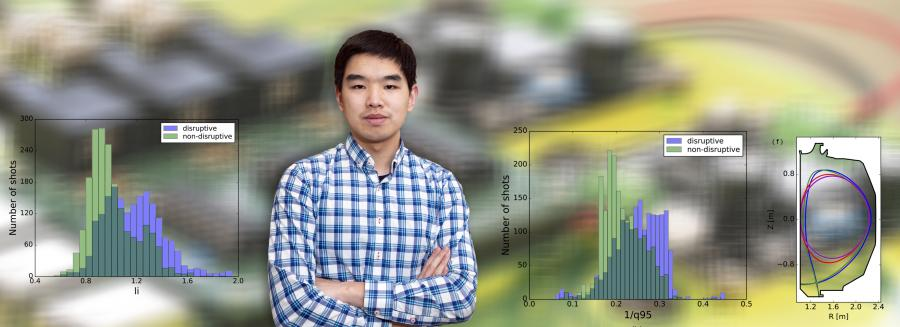Mar 18 2020
An international group of researchers has demonstrated that artificial intelligence (AI) can help predict and avoid disruptions in fusion facilities—that is, the sudden discharge of energy preserved in the plasma that drives fusion.
 Physicist Yichen Fu. Image Credit: Photo and collage by Elle Starkman/PPPL Office of Communications.
Physicist Yichen Fu. Image Credit: Photo and collage by Elle Starkman/PPPL Office of Communications.
Such disruptions can stop the reactions and considerably destroy the fusion facilities. The researched AI is the same computing theory that will empower autonomous cars.
The research team was headed by a graduate student from Princeton Plasma Physics Laboratory (PPPL) at the U.S. Department of Energy (DOE).
Risk of Disruptions
Tokamaks are fusion devices that face an increased risk of disruptions as scientists, in an attempt to boost fusion power to generate the fusion—that drives the stars and sun—on Earth, come across the operational boundaries of the facilities. Hence, researchers should be able to increase fusion power without crossing those boundaries.
Such a potential will be important for ITER, the huge international tokamak being constructed in France to show the realism of fusion energy.
In fusion reactions, light elements are integrated in the form of plasma—the hot and charged state of matter made up of free electrons as well as atomic nuclei that constitute 99% of the perceptible universe—to produce enormous amounts of energy. Globally, researchers are looking for ways to produce fusion for an almost unlimited supply of clean and safe power to produce electricity.
The scientists trained a set of rules, or an AI machine learning algorithm, on thousands of earlier experiments conducted at the DIII-D National Fusion Facility that is operated by General Atomics for the DOE.
When the researchers subsequently applied the set of rules in real-time to ongoing experiments at the DIII-D facility, they discovered that the machine learning algorithm can forecast the possibility of disruptions and trigger actions that prevented the onset of disruptions.
Relatively Simple Model
It’s fascinating to see that a relatively simple machine learning model could accurately predict the complicated behavior of fusion plasma.
Yichen Fu, Study Lead Author and Graduate Student, Princeton Program in Plasma Physics, Princeton Plasma Physics Laboratory
The study described the findings in the Physics of Plasmas journal and appeared in “SciLight”—a featured publication of the American Institute of Physics.
It’s great to see students leading multi-institutional teams and making a real impact on the development of machine learning methods for the control of fusion plasmas.
Egemen Kolemen, Physicist and Assistant Professor, Department of Mechanical and Aerospace Engineering, Princeton University
Kolemen also supervised Yichen’s work.
The study outcomes represent another step toward averting disruptions in ITER and state-of-the-art facilities, stated Raffi Nazikian, physicist and head of the ITER and Tokamak Department at PPPL.
This work represents significant progress in the use of machine learning to develop a disruption prediction and avoidance method in fusion devices. However, a great deal of R&D is still required to improve the accuracy of the predictions and to develop fail-safe control methods to avoid disruptions in ITER and future reactors.
Raffi Nazikian, Physicist, Princeton Plasma Physics Laboratory
The study’s co-authors include scientists from General Atomics, Princeton University, Yale University, and the Eindhoven University of Technology in the Netherlands, along with Kolemen.
The study was funded by the Euratom research and training program, with support for the use of DIII-D facility offered by the DOE Office of Science.